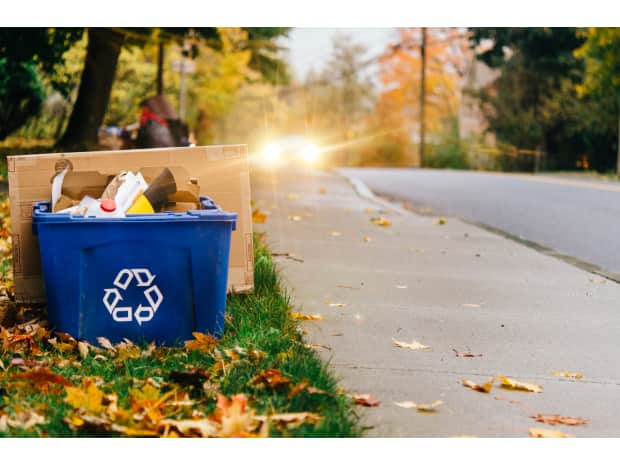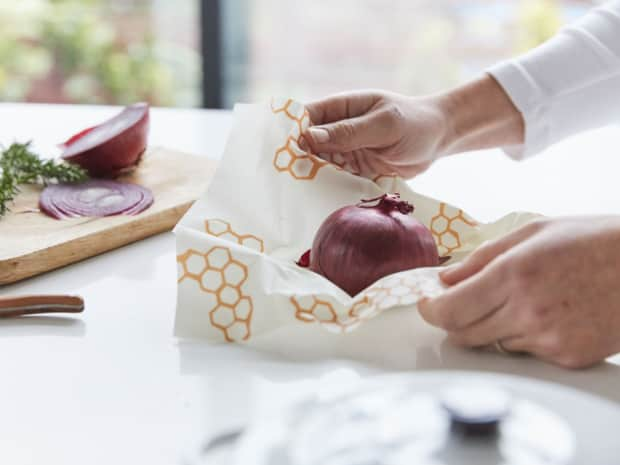
11 Things You Think Are Recyclable But Aren’t
You might be unknowingly poking holes in the process by "wish" recycling non-recyclable items.
Read More

Last Updated: June 23, 2022
Whether you’re looking for options for kids, travel, or parties, we’ve listed out the best sustainable straws for every occasion — plus how to keep 'em clean.
We’re in the middle of a straw crisis. Plastic straws are cheap, colorful, accessible, and ubiquitous, but they’re one of the many “single-use” plastics currently plaguing our environment, ending up in landfills, littering oceans, and taking hundreds of years to decompose. U.S. cities like Washington, D.C. and Seattle — as well as the entire state of California — have banned the use of single-use plastic straws. And, as with plastic bag bans, consumers and industries alike are trying to find alternatives.
In part due to increased public consciousness, there are now tons of convenient, stylish, unique, and far greener alternatives to plastic straws available. From reusable options that can last you a lifetime to disposable straws that will biodegrade naturally, these plastic-alternative straws will keep you hydrated in high fashion.
Why use a straw once, then throw it out? With these reusable options, you’ll be reducing waste and rocking a snazzy straw to boot.
Glass straws are easily one of the best options for adults at home. Unlike many reusable alternatives, glass straws have next to no texture, meaning you aren’t getting any plastic-y feeling while drinking your beverage of choice. They can handle cool and hot drinks with ease, are easy to clean, and are the only straw option that is transparent. Easily the most visually attractive of the bunch, glass straws add a certain air of elegance to any drink, making them an easy pairing for date night or me time.
The best thing about silicone straws is that they are flexible. They have a rubbery structure, meaning you can bite down on them, bend them, stuff them in a pocket, or pack them in a lunchbox, no problem. The silicone texture is similar to that of plastic, and like plastic, they come in tons of fun colors, making them a great option for kids. And, unlike glass and metal, there is little chance of hurting your teeth with an accidental bite down on a straw made of silicone.
Unsurprisingly, metal straws are almost indestructible. Extremely rigid and very industrial-looking, metal straws can take all kinds of wear-and-tear with ease. Unlike most other straw options, metal straws sometimes come in collapsable varieties, making them excellent for serious travelers. This toughness does mean they can hurt your teeth, or even puncture thin travel bags, if not used and stored with care, so make sure to use carefully.
If sustainability is your gold star, a bamboo straw is the obvious choice. Made from fast-growing bamboo plants, bamboo straws look (and sometimes taste) a little bit like a bamboo shoot. Bamboo straws strike a happy medium between the hardness of metal and the elegance of glass. They do not last years and years like metal or glass, but that is by design: They naturally biodegrade, meaning if they end up in the garbage, they won't stay there nearly as long as metal or glass. If you are the type to misplace or break straws often, bamboo is the way to go.
There are times when you need a lot of straws, and you need them fast. Whether it's game night, a birthday party, or a huge wedding, you don't want to force reusable straws upon your guests and have to make them promise to take them home and use them for years to come. Luckily, there are some great disposable yet sustainable options for any big event.
Let’s be real: We’ve all had bad experiences with soggy paper straws. While paper straws do hold some advantages over plastic ones, they are not exactly a home run compared to the other options we’ve talked about. Paper straws do biodegrade and compost much faster than plastic straws, degrading in a matter of months instead of years. However, paper straws are often made of fresh paper, aka trees, making them just as energy-costly to produce as plastic straws. For a better disposable straw option, try natural straws.
There are tons of more natural options for disposable straws, including straws made of literal blades of grass, sticks of hay, shoots of cane, and even seaweed. All of these options are fun, compostable, and biodegrade much faster than any other option mentioned above. Available in bulk, there’s no reason not to ditch paper and plastic for the next big get-together.
Wash reusable straws either by hand or in the dishwasher. Most reusable straws will state on the packaging if they are dishwasher safe. If handwashing, use the (most likely) included straw brush and a bit of mild dish soap to clean the interior of the straw. You can use a regular dish brush on the straw's exterior.
If your straws are dishwasher safe, place them in the silverware slot of your dishwasher and run as normal! To keep straws clean longer, store them in a straw case (it helps to take them on the go, too).
For the most part, you can’t recycle reusable straws curbside. But some glass, metal, and silicone straws can be dropped off at specialty recycling facilities to be recycled. While a bit of a chore, it is essential to recycle these straws if possible since glass, metal, and silicone take hundreds of years to biodegrade.
Bamboo, grass, hay, and other natural straws similarly cannot be recycled, but they do compost and biodegrade very quickly!
For the most part, plastic straws are not recyclable. The vast majority of plastic straws are considered type 5 plastic (think the little recycling symbol with a number 5 in the center). Type 5 plastic is not accepted at most recycling facilities and will be thrown out if received. Adding to the problem is how small plastic straws are; they often fall through or out of recycling machinery, making them extra difficult for facilities to handle.
Paper straws are also mostly non-recyclable. While paper is generally recyclable, paper straws are considered “food contaminated,” meaning recycling facilities will throw them out instead of recycling them. Making matters more complicated, some paper straws are actually made partly with plastic, making them even more difficult to recycle!
From natural household to personal care, everything at Grove is healthier for you and the planet — and works! We recommend monthly shipments and product refills that you can edit or move at any time. No monthly fees or commitments required.

You might be unknowingly poking holes in the process by "wish" recycling non-recyclable items.

Recyclable plastic packaging is a myth — less than 9% of plastic gets recycled; here’s why plastic recycling doesn’t work.

Following along for detailed instructions on how to recycle and dispose of your packaging responsibly.

With these reusable equivalents, you can kiss those single-use trash monsters goodbye.